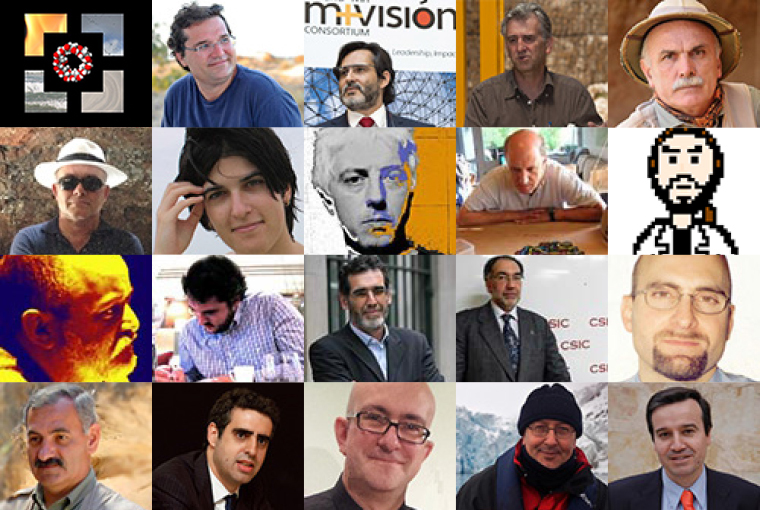
 Mètode |
||||||||||||||||||||||||||||||||||||||||||||||||||||||||||||||
|
Communicate science in 140 characters or less. Barely a headline or a catchy sentence to hook the reader. Every scientist who decided to open a Twitter account since 2006 (the year the platform was launched) had to adapt to this language brevity. It doesn’t seem simple but some have achieved a remarkable success. Science recently published a list of «star» scientists on Twitter. Some famous scientists who appear on TV and radio programmes such as Neil deGrasse Tyson, Brian Cox, Richard Dawkins, Ben Goldacre or Phil Plait among others occupy prominent spots on the list. The journal wanted to check with specific cases how the so-called «Kardashian index» worked. This indicator or K-index is a provocative proposal launched during the summer by researcher Neil Hall. In a comment published in Genome Biology, Hall claimed that if Kim Kardashian – famous for being ever-present in the media and not due to any specific work she does – had millions of Twitter followers and, therefore, her comments and opinions have a great impact, the same thing might be happening in the scientific community: there might be people who become famous just because of who they are instead of for their contribution to science. Thus, Hall proposed to calculate the discrepancy between the number of followers of a scientist and the citations of their work in prestigious journals. Hall finally added that if a scientist turns out to be too «Kardashian» perhaps he had to devote less time to Twitter and more to writing articles. |
«Are famous scientists worse for devoting part of their time to science communication? Shouldn’t trying to spread knowledge to a wider audience be considered an achievement instead of an inconvenience?» |
|||||||||||||||||||||||||||||||||||||||||||||||||||||||||||||
|
Publish or popularise
The Science article, which applied this formula to outstanding science communicators, concluded that – even in cases of the most «Kardashian» scientists – their Twitter fame was well deserve, as they accumulated a great number of citations. Obviously, regardless of provocation and reaction, the topic appealed to a scientific community debate. What’s the role of popularity in author recognition for a discipline? And what’s the role of other indicators such as the h-index, which measure the amount of publications and citations in impact journals? Why should a scientist be interested in popularisation if it carries no curricular value? The analysis in Science offered another interesting piece of data: most scientists in the highest positions of the citation ranking were not tempted by Twitter. In the sample of 50 among the 100 most cited scientists, according to the Scholarometer ranking, only a fifth had identifiable profiles on Twitter. |
||||||||||||||||||||||||||||||||||||||||||||||||||||||||||||||
|
Twitterphobia and Twitterphilia Is the situation similar in Spanish science? In Mètode, we wanted to verify it. Out of the 45 Spanish scientists that can be found among the most cited ones in a Thomson Reuters, list, only seven have a Twitter account. Out of these, four show scarce or no activity (no tweets or profile abandoned for over a year). Therefore, only three of them have a prominent Twitter account: Carlos Duarte, from CSIC, leads the list with 1,262 followers. Duarte had an active blog for some time in the Huffington Post, where he wrote about science. He has also collaborated with the newspaper El País. The second position is occupied by Alfonso Valencia, from CNIO, with 1,155 followers. And Miguel Araújo, also from CSIC, closes the ranking with 360 followers. The rest do not have a profile that can be identified. Even though they don’t have a Twitter account, two of the most cited researchers do have their own website. One is the chemist Avelino Corma, Prince of Asturias Award for Research in 2014. The other case is biologist Montserrat Vilà. However, some resistance by the most cited authors is detected regarding Twitter presence. This analysis may lead us to think that, as Hall indicated, those who are too busy writing papers don’t have the time to popularise via social networks. |
||||||||||||||||||||||||||||||||||||||||||||||||||||||||||||||
|
The Spanish scientific Twittersphere Is this a real dichotomy? Or is it possible to be one of the most influential scientists in a discipline and still be successful in social networks? Is there any problem in being a good communicator? Are famous scientists worse for devoting part of their time to science communication? Shouldn’t trying to spread knowledge to a wider audience be considered an achievement instead of an inconvenience? If we take a quick, non-systematic look at the Spanish scientific Twittersphere, although their numbers are far from international «stars», we can find some prominent figures. |
||||||||||||||||||||||||||||||||||||||||||||||||||||||||||||||
Updated: 29/09/14. |
||||||||||||||||||||||||||||||||||||||||||||||||||||||||||||||
|
Obviously, this list is far from being an exhaustive study and certainly many names are missing. In fact, only researchers with scientific publications and over a thousand followers were taken into account. However, it is representative of the scientific profiles we can find on the Internet. There is another element in the list, highlighted also by Hall and the article in Science, which is the limited presence of scientist women in Twitter. Why do they not try participate more in the public space of social networks? What are the reasons for this limited visibility? We would like to know your opinion and suggestions to complete the Spanish scientific Twittersphere. Go ahead and write! Lucía Sapiña. The Two Cultures Observatory. Mètode Science Studies Journal. University of Valencia. |
||||||||||||||||||||||||||||||||||||||||||||||||||||||||||||||



































